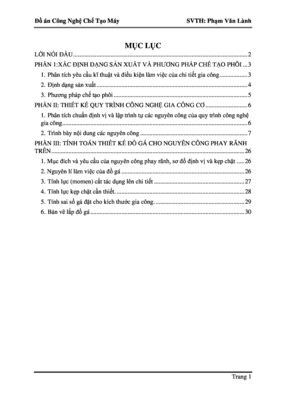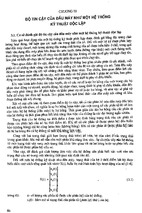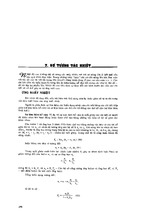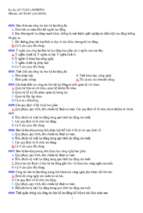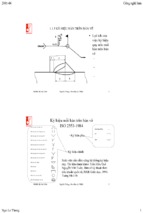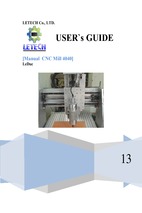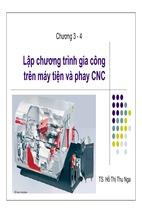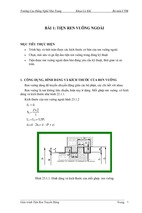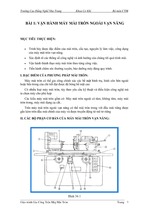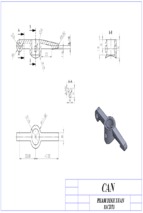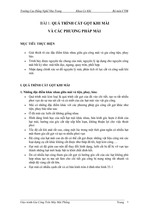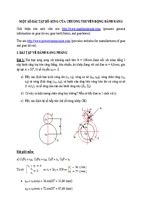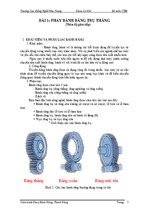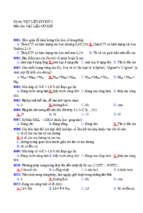Adhesive Manufacturing Processes
Chapter 3: Types of Adhesives
Univ.-Prof. Dr.-Ing. Prof. h.c. Stefan Böhm
Department for Cutting and Joining Manufacturing Processes (tff)
University of Kassel, Germany
Quelle: Wikipedia
Definitions
Adhesive (DIN EN 923)
is a non-metallic material that functions as a
bonding material via surface adhesion (adhesion) and
internal strength (cohesion).
Main Purpose: Transmission of force
Sealant (DIN EN 26 927)
is a material that seals a joint by
bonding to the edges of the joint.
Main Purpose: Sealing of surfaces to prevent the discharge of liquid
Every adhesive can seal, but every sealant can also bond!
2
Agenda
Introduction
Chemically Reacting Adhesives
Physically Bonding Adhesives
Examplary Selection of Adhesives
3
Adhesives – Possible Classifications
There are many possibilities to classify adhesives, depending on…
Specific Application
Geometry of the Bond
Chemical Basis of the Adhesive
Strength Class
Outward Form
Number of Components within the Adhesive
Setting Mechanism
4
Specific Applications
Bonding of Metals
Phenolic resin adhesives, acrylates, epoxy resin adhesives,
polyurethane adhesives, polyester resin adhesives
Bonding of Synthetic Materials
Solvent-based adhesives, acrylates, epoxy resin adhesives
Bonding of Glass
Bonding of Ceramics
Bonding of Wood
Bonding of Leather
Source: Kleben, Habenicht, Springer Verlag
Polyurethane adhesives, silicone adhesives, epoxy resin
adhesives, cyanacrylate
Phenolic resin adhesives, epoxy resin adhesives
Polyvinyl acetate adhesives (PVAC)
Rubber adhesives
5
Geometry of the Bond
Rotationally Symmetric
Screwing
Pipe- Connections
Shaft- Connections
Source: Kleben, Habenicht, Springer Verlag
Axially Symmetric
Level
Rectangular
Overlapping (level)
Corner Joint
Edgefolding Adhesion
Butt-Joints
Asymmetric
Shaft – Level
Level - Level
6
Chemical Basis
Organic Adhesives
Inorganic Adhesives
Natural Basis
Artificial Basis
Protein, Carbohydrates,
Natural Resins
Acrylates, Polyurethanes,
Epoxies
Metal Oxides, Silicates,
Borates, Phosphates
Silicones
(Compound with organic and inorganic characteristics)
Source: Kleben, Habenicht, Springer Verlag
7
Strength Classes
Structural Bonds
Strength
(i.e. 1-C-Epoxy Resin)
Semi-Structural Bonds
(i.e. 2-C-PUR)
Fixation Bonds
(i.e. Fast-Setting Adhesive)
Elastic Bonds
(i.e. 1-C-PUR)
Sealing Bonds
(i.e. Acrylate-Sealant)
Source: TC Kleben
Elasticity
8
Outward Forms
Fluid Adhesives
Adhesive Putty
Solid Adhesives
Reaction Adhesives,
Adhesive Varnish, Pastes
Larch Resin,
Canada Balsam
Hotmelt Adhesives, Powder
Adhesives,
Adhesive Films
i.e.: Metalworking industry
i.e: Visual industry
i.e.: Furniture Industry
Source: Kleben, Habenicht, Springer Verlag
9
Number of Components within the Adhesives
1 Component (1C)
- Epoxy
Resins
Polyurethanes
- Acrylates
- Silicones
Source: Kleben, Habenicht, Springer Verlag
2 Components
(2C)
3 Components
(3C)
- Epoxy
Resins
Polyurethanes
- Acrylates
- Silicones
- Acrylates
- Epoxy
Resins
10
Setting Mechanisms
Chemically Reacting
Physically Bonding
Cold Setting
Hot Setting
Polymerisation Adhesives
Polyaddition Adhesives
Polycondensation Adhesive
Source: Kleben, Habenicht, Springer Verlag
Hotmelt Adhesives
Solvent-Based Adhesives
Plastisols
11
Criteria for the Classification of the Setting Mechanism
Condition of the molecules at the beginning of the bonding process
Reaction Adhesives
Setting Adhesives
Polymers are formed out of monomers
Polymers are already complete
Small, reactive molecules (monomers) are
made into long, partly interlinked
molecules (polymers) through a chemical
reaction.
chemically hardening
Source: Kleben, Habenicht, Springer Verlag
Using either solvents or high
temperatures the polymers are made
wettable. When the solvent evaporates or
the adhesive cools down, it hardens.
physically bonding
12
Adhesives - Overview
Chemically Hardening
Physically Bonding
Polyaddition
Epoxy Resins
Polyurethanes
Through Solidification
Hotmelt Adhesives
Polycondensation
Silicones
MS-Polymers
Phenolic Resins
Polyester Resins
Through Evaporisation
Solvent-Based Adhesives
Dispersions
Contact Adhesives
Polymerisation
Cyanacrylates
Methyl Methacrylates
Anaerobic Adhesives
Radiation Curable
Adhesives
Source: Kleben, Habenicht, Springer Verlag
Permanently Adhesive
Pressure Sensitive Adhesive
Butyle Rubbers
Through Gelling
Plastisols
13
Agenda
Introduction
Chemically Reacting Adhesives
● Polyaddition Adhesives
● Polymerisation Adhesives
● Polycondensation Adhesives
Physically Bonding Adhesives
Examplary Selection of Adhesives
14
2C-Adhesives in General
Two-Component-Adhesives
Two adhesive monomers are used that are spatially apart
One of the monomers contains resin monomers, whilst the other contains hardeners
Need to be brought to react by mixing them
The so created polymer/resin is the cured adesive
Processing
Mixing Ratio
Rate of Dilution
Pot Life
Source: Kleben, Habenicht, Springer Verlag
15
Pot Life – Processing Time of 2C-Adhesives
The time in which the reactive adhesive has to be used after
all components have been mixed
Means the time in which the completed adhesive mixture can be used, i.e. the
processing time at room temperature
Begins with the first encounter of the adhesive monomers
Ends when the curing process has gone so far that hardness and viscosity
have increased measurably and further processing is no longer possible
Source: Kleben, Habenicht, Springer Verlag
16
2C-Adhesives in General
Pot life is dependent on the surrounding temperature and the quantity
Time
[min]
Example according to
data sheet: 10 min at
20°C
20
10
5
0
Source: Kleben, Habenicht, Springer Verlag
10
20
Rule:
An increase in temperature
of 10°C reduces the pot life
to half
40
30
Temperature [°C]
17
Curing of 2C-Adhesives
Curing time
Period of time that an adhesive needs to reach at least handling strength or,
at the latest, its final strength.
Festigkeit
100%
Gelpunkt
Gel point
0%
Handling
Strength
Pot life
Source: Kleben, Habenicht, Springer Verlag
Time
Final
Strength
18
Influence of the Temperature on Chemical Reactions
Influence of the temperature on the speed of reaction during the curing
process of reactive adhesives
Reaktionsgeschwindigkeit
The higher the temperature, the quicker the curing process will be
The lower the temperature, the slower the curing process will be
Rule:
An increase in temperature of
10°C reduces the pot life to half
and therefor doubles the speed of
reaction
Temperature
Source: Kleben, Habenicht, Springer Verlag
19
Types of Adhesives
Chemically Curing
Adhesives
Polyaddition
Polymerisation
Epoxy Resins
Cyanacrylates
Silicones
Polyurethanes
Methyl
Methacrylates
MS- Polymeres
Anaerobic
Adhesives
Phenolic Resins
Radiation
Curable
Adhesives
Polycondensation
Polyester Resins
20
- Xem thêm -


